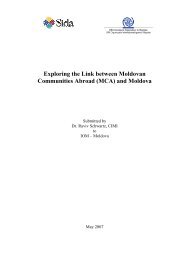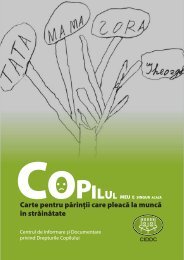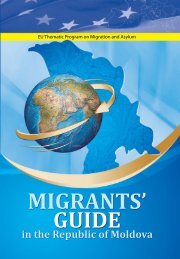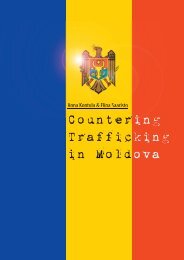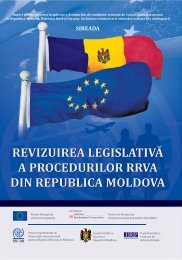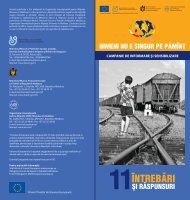Trafficking in Human Beings in Southeastern Europe - Iom
Trafficking in Human Beings in Southeastern Europe - Iom
Trafficking in Human Beings in Southeastern Europe - Iom
- No tags were found...
You also want an ePaper? Increase the reach of your titles
YUMPU automatically turns print PDFs into web optimized ePapers that Google loves.
<strong>Traffick<strong>in</strong>g</strong> <strong>in</strong> <strong>Human</strong> Be<strong>in</strong>gs<strong>in</strong> <strong>Southeastern</strong> <strong>Europe</strong>Summary andRecommendations• Develop NGO networks at national and regional levels to deal withanti-traffick<strong>in</strong>g issues and other related areas (human rights, HIV/AIDS prevention), and to exchange <strong>in</strong>formation at regional level;• Create formal structures and sign agreements of co-operation withgovernments and <strong>in</strong>ternational organisations, especially concern<strong>in</strong>gthe issues of victim identification, the referral system and security oftrafficked persons;• Develop fundrais<strong>in</strong>g strategies (f<strong>in</strong>ancial and technical expertise) withlocal NGOs, which have the experience and will to assist traffickedpersons;• Donors and <strong>in</strong>ternational organisations to provide support (f<strong>in</strong>ancialand technical expertise) to local NGOs.2. Role of donors2.1. SummaryThe role of donors has not been addressed <strong>in</strong> this report. However, anti-traffick<strong>in</strong>gactivities <strong>in</strong> SEE have been largely <strong>in</strong>fluenced and supported by fund<strong>in</strong>gfrom the countries of Western <strong>Europe</strong> and the USA. Although there is a lot ofdiscussion on the importance of human rights, donor countries have primarilycontributed to the development of law enforcement projects and victim returnprogrammes, areas directly related to the issues of security, organised crimeand migration.Furthermore, donors have also largely funded <strong>in</strong>ternational organisations,result<strong>in</strong>g <strong>in</strong> the marg<strong>in</strong>alisation of local efforts, not to mention the often <strong>in</strong>efficientuse of limited resources on expensive, sometimes irrelevant, andunsusta<strong>in</strong>able programmes, which could have been implemented at a fractionof the cost us<strong>in</strong>g local experts and NGOs.Although some NPAs <strong>in</strong>clude budgets and some governments have committedthemselves to support<strong>in</strong>g anti-traffick<strong>in</strong>g work f<strong>in</strong>ancially, the implementationof the NPAs largely depends on external donor support.2.2. Recommendations• Evaluate programmes and projects funded over the past severalyears for impact and effectiveness;• Provide support to activities as set out <strong>in</strong> the NPA frameworks, withthe aim of develop<strong>in</strong>g and secur<strong>in</strong>g susta<strong>in</strong>able local <strong>in</strong>stitutions andorganisations;• Co-operate with the SPTTF to secure exchange of <strong>in</strong>formation and coord<strong>in</strong>ationof efforts;• Consult with SPTTF on regional priorities, activities and regionalprojects;• Co-operate with other donor agencies to avoid duplication of effortsand projects, and to develop common fund<strong>in</strong>g standards.3. Prevention and rais<strong>in</strong>g awareness1583.1. SummaryAccord<strong>in</strong>g to the SPTTF model NPA and to national NPAs, prevention and rais<strong>in</strong>gof awareness should <strong>in</strong>clude not only <strong>in</strong>formation about traffick<strong>in</strong>g butshould also address root causes that contribute to the vulnerability of women



